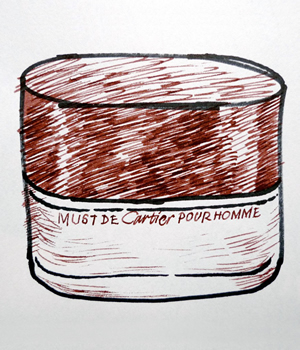Tagged With ‘rose’
Etat Libre d’Orange
You Or Someone Like You
25 August, 2017
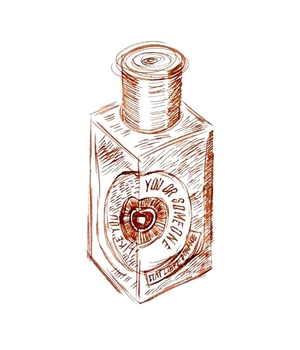 Victor Hugo, Tom of Finland, Tilda Swinton and the Marquis de Sade may not, on the face of it, have a great deal in common, but they have all inspired perfumes from the French niche-fragrance brand Etat Libre d’Orange.
Victor Hugo, Tom of Finland, Tilda Swinton and the Marquis de Sade may not, on the face of it, have a great deal in common, but they have all inspired perfumes from the French niche-fragrance brand Etat Libre d’Orange.
You Or Someone Like You is a collaboration with American perfume critic Chandler Burr, inspired by (and named after) his first novel, a comedy of manners set in Los Angeles, which I’d highly recommend. Though Burr points out that his perfume is not intended as an ‘olfactory landscape painting’, the heroine of his book is a keen gardener, and the scent he’s created with perfumer Caroline Sabas is as fresh as a spring morning in Beverly Hills.
Zingy citrus, rose, sharp grass and delicious hit of spearmint make for an addictively refreshing summer cologne – so addictive, in fact, that my bottle is already half empty.
Hermès
Equipage Géranium
29 November, 2015
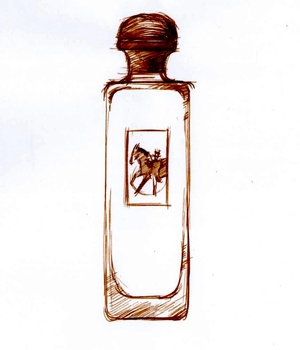 Equipage is such a classic perfume that it’s tempting to ask why anyone would mess with it, but that’s a bit like wondering why anyone would want to reinterpret the Beatles’ original version of Yesterday.
Equipage is such a classic perfume that it’s tempting to ask why anyone would mess with it, but that’s a bit like wondering why anyone would want to reinterpret the Beatles’ original version of Yesterday.
Created by the perfumer Guy Robert and launched in 1970, Equipage was the first Hermès perfume to be designed specifically for men, and Robert composed a rich, subtly spicy scent which includes – among many other things – bergamot orange, jasmine, lily of the valley and clove-scented carnations.
Forty-five years on, the company’s in-house perfumer, Jean-Claude Ellena, has revisited three of its classics, in each case pairing them with a new ingredient. First came Bel Ami Vétiver, followed by Rose Amazone, and now we have his updated version of Equipage – Equipage Géranium.
If Ellena’s attempt to give Equipage a modern twist isn’t (to my nose at least) entirely successful, his choice of geranium (or pelargonium, to be botanically correct) as a new ingredient is a typically clever and imaginative one. Though the leaves of different species of pelargonium smell of everything from lemon to cinnamon, most of the so-called geranium oil used in perfumery comes from a single South African species, Pelargonium graveolens. As with all natural ingredients, geranium oil comes in a range of different grades, but they generally share a fresh, slightly sharp smell that’s usually described as both fruity and minty, often with a hint of rose.
I’m guessing that it was the fresh, minty element of geranium oil that appealed to Jean-Claude Ellena, and Equipage Géranium does smell a tiny bit fresher and sharper than the original Equipage – but it’s a subtle twist rather than a radical reinvention. I’m not sure it’s sufficiently different to make it worth choosing over the original, but unlike many of Ellena’s perfumes, which are always refined but sometimes stripped down until they’re slightly colourless, Equipage Géranium retains all the richness and complexity of its inspiration. Given the crude simplicity of so many modern scents, that’s a quality to be celebrated.
Christian Dior
Jules
21 August, 2015
 Sage isn’t everyone’s favourite herb, though turkey stuffing wouldn’t the same without it. It’s used less often in perfumery than in cooking, but Jules shows what a great ingredient it can be in the hands of a brilliant perfumer.
Sage isn’t everyone’s favourite herb, though turkey stuffing wouldn’t the same without it. It’s used less often in perfumery than in cooking, but Jules shows what a great ingredient it can be in the hands of a brilliant perfumer.
The ‘nose’ in this case was Jean Martel, who worked for the French fragrance company Givaudan in the 1970s and 1980s and deserves to be far better known, not least because he also created that 1970s classic, Paco Rabanne for Men.
Jules was launched in 1980, with a brilliant advertising campaign featuring posters by René Gruau, arguably the greatest fashion illustrator of the last century, which helped the first bottles sell out in record time. Martel combined sage (which has a slightly catty smell) with cedar and other things like wormwood, lavender and bergamot. To me the result smells like sage and slightly peppery leather, though there’s a long list of other ingredients, including cumin, sandalwood, oakmoss, jasmine, musk and rose.
Despite its initial success, Jules has since been overshadowed by the success of Kouros, which was launched the following year. Created for Yves Saint Laurent by the brilliant Pierre (Cool Water) Bourdon, Kouros shares Jules’ clean / dirty / sexy character, and both scents belong to the same fragrance ‘family’, the fougères – a style of perfumes, usually aimed at men, based on a combination of lavender and coumarin (originally derived from tonka beans but usually synthesised).
Of course, Kouros’ ongoing popularity may be because it’s inherently superior to Jules, but actually I think it’s more to do with the fact that over the years Kouros has benefited from regular advertising, while Dior seems to have forgotten that Jules ever existed, which I think is a terrible shame.
To make matters worse, while you can buy Kouros pretty much anywhere, Jules has become ridiculously hard to find: I don’t know anywhere in the UK that sells it, and even in Paris the only place that seems to stock it is the department store Bon Marché, though you can buy it from Dior’s French website. Given Dior’s apparent lack of interest, it’s a wonder it hasn’t been discontinued, but I’m glad it’s still on sale, even if it’s now a rarity.
I can only hope that one day they decide to invest in promoting it again and making it available to all – but in the meantime if you want something special that very few other people will have, get over to Bon Marché.
Acqua di Parma
Colonia | Colonia Assoluta
14 July, 2015
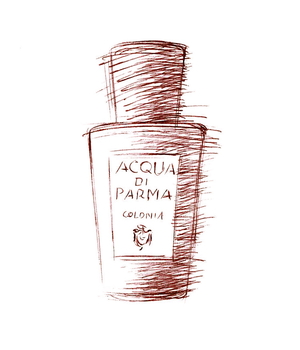 Before I start, I have to admit that the Acqua di Parma colognes have never really floated my boat, but very kindly the company have sent me some samples to try, and as it’s one of the most popular men’s fragrances I wanted to explore why that might be.
Before I start, I have to admit that the Acqua di Parma colognes have never really floated my boat, but very kindly the company have sent me some samples to try, and as it’s one of the most popular men’s fragrances I wanted to explore why that might be.
There are lots of things to like about Acqua di Parma Colonia. Its packaging, for starters, is wonderfully elegant: a golden-yellow, linen-textured cardboard tube, which splits exactly in half to reveal the bottle tightly nestled inside.
The bottle itself is a beautifully judged design, in plain glass with gently flared shoulders and a chunky black cap to match. And the typography is lovely: effortlessly stylish, with something of the 1920s about it. The whole package is an object lesson in how to make a product that says ‘classic’ and ‘quality’.
So what about the scent inside? Again, it’s classic and simple – perhaps a little too simple for me. The original Colonia was launched in 1916, and I’m presuming it was always a fresh, citrussy eau-de-cologne, though like pretty much every long-lived fragrance on the market it will almost certainly have been reformulated over the years.
That’s not always a bad thing, and today’s version may well smell more sophisticated than the original; Agua de Colonia by the Spanish brand Alvarez Gomez, for example, may conceivably have been less tinkered with, but by comparison it smells quite crude and harsh.
Not that Colonia has a particularly complex character: it’s intensely lemony when first you spray it on, but as the sharpness of the lemon fades into the background you get the clean, herbal smells of rosemary and lavender. So far so classic eau-de-cologne, but what makes Colonia different is the fact that it’s also blended with rose, which adds an unobtrusively feminine touch – a bit like the artificial jasmine scent at the centre of Eau Sauvage, though not nearly as striking in its effect.
The rose (I think) also makes Colonia smell rather talcum-powderish, which is pleasant enough but comes across as somehow rather old-ladyish – I guess because we associate powdery perfumes with an older generation. It certainly smells clean and fresh, in a soapy kind of way, and perhaps that explains its popularity among men for whom smelling clean and fresh is the main (and often only) purpose of perfume.
Personally I want to smell a bit more interesting than fresh laundry, and my other problem with Colonia is that it doesn’t last: within an hour or two I can hardly smell it on my skin. Again, that may be part of its appeal for men who are a bit nervous about wearing scent of any kind, so horses for courses, I suppose.
After its glory days in the 1920s, the Acqua di Parma company limped along until 1993, when it was bought by three rich Italian businessmen whose money came from Ferrari cars, Tod’s shoes and La Perla underwear. They launched scented candles and the like, but it wasn’t until after the luxury conglomerate LVMH took a stake in 2001 that the Colonia range was extended.
First came Colonia Assoluta in 2003, followed by Intensa in 2007, Essenza in 2010 and Intensa Oud in 2012. I have all of these versions apart from Intensa Oud, and I have to admit that, though I thought I had a fairly sensitive sense of smell, the differences between them are so subtle that I find them almost impossible to tell apart.
Colonia Assoluta was formulated by two of the best-known perfumers around today: Jean-Claude Ellena (creator of Vétiver Tonka, among others) and Bertrand Duchaufour (creator of many unusual fragrances, especially for L’Artisan Parfumeur), which is a bit like getting Debussy and Ravel to compose a duet. The results should be extraordinary, but these two great talents seem to have cancelled each other out: Colonia Assoluta is discreet to the point of invisibility, like a plain grey Hermès jumper.
What Duchaufour and Ellena seem to have done is shuffled a few of the ingredients of the original Colonia about a bit – changing the lavender for jasmine, for example – but it’s all so carefully balanced that the overall effect is almost identical, though you can smell a faint difference after an hour or two. Their work is certainly very subtle and clever, like Gus Van Sant’s frame-by-frame remake of Psycho, but you could argue that it’s equally pointless.
The same conjuring trick, if it’s fair to call it a trick, seems to have been achieved with the Essenza and Intensa versions: in each of them the ingredients are slightly different, but their smell is even less varied than their packaging (Essenza comes in a black tube, but is otherwise, ahem, a carbon copy).
Brilliant or bonkers? Delicious discreet or disappointingly dull? I’ll have to let you compare them for yourself. Maybe my nose isn’t as super-sensitive as it should be, but I’d be interested to hear what other people think. All the same, thank you to Acqua di Parma for letting me give them a try: they certainly look very handsome on my perfume shelf.
Acqua di Parma
Colonia Leather
26 February, 2015
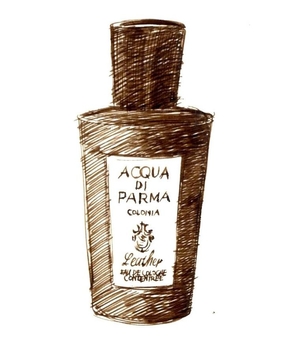 The smell of leather is one of the staples of men’s fragrances. It has an interesting history, too, since at least one of the roots of modern perfumery can be followed back to the perfumed-leather gloves that became fashionable from the sixteenth century on.
The smell of leather is one of the staples of men’s fragrances. It has an interesting history, too, since at least one of the roots of modern perfumery can be followed back to the perfumed-leather gloves that became fashionable from the sixteenth century on.
Some ‘leather’ fragrances are more successful than others, Chanel’s powerful and historic Cuir de Russie being one of the best. But until the launch of Colonia Leather in May 2014 I’d never come across a perfume that really captured clean new leather’s comfortingly aromatic smell.
I have to admit that this came as something of a surprise, as I’m not a great fan of the other perfumes in the Acqua di Parma range. I can recognise their quality, and I love their packaging, but their combination of lemon and rose just doesn’t do it for me – the rose seems just too feminine a counterpart to the freshness of the classic citrusy eau-de-cologne.
So I could hardly believe my nose when I first sprayed Colonia Leather on. Yes, it contains a definite hint of the Acqua di Colonia signature rose-cologne smell, but that’s quickly overlaid by a beautifully smooth, refined leather smell, like the finest fresh kidskin gloves, or an unjustifiably expensive suede jacket from Hermès. Though it’s not especially strong, its gentle scent stays on the skin for a good half day or more, even if I find it hard to smell on myself after an hour or so.
How such an authentically leathery fragrance is done is beyond me, though it does contain at least one of the classic ingredients of ‘leather’ perfumes, rectified birch tar, which is also used in Cuir de Russie. I’ve pointed out before that a list of ingredients is about as useful in describing a perfume as a list of words in describing a Shakespeare sonnet, but for those who would like to know here are some of the other things in the formula: Sicilian lemon, Brazilian orange oil, raspberry, rose, honeysuckle, Paraguayan petitgrain (made from the twigs of orange trees), ‘red’ thyme, cedarwood, cistus, guaic wood and olibanum.
So who was behind this marvellous scent? As usual there’s no mention anywhere on the Acqua di Parma website or in its marketing material, but I think Colonia Leather’s creator deserves more credit than that. So please take a bow François Demachy, the French perfumer, formerly at Chanel, who has been the ‘director of olfactory development’ at Christian Dior since 2006.
(If you’re wondering, incidentally, what Dior’s head perfumer is doing moonlighting for Acqua di Parma, the answer is that both companies are owned by the luxury-goods conglomerate LVMH, and Demachy also has oversight of its other perfume brands. And as it happens Colonia Leather isn’t his first perfume for Acqua di Parma; he also created Colonia Intensa, which was launched back in 2007.)
At £150 for 100ml Colonia Leather is a lot more expensive than the other fragrances in the Acqua di Parma range, and for now (2014) it’s only available from Harrods, but it’s really worth going to smell, even if you can’t justify spending quite so much on a single bottle of perfume.
Cartier
Déclaration d’un Soir
18 February, 2015
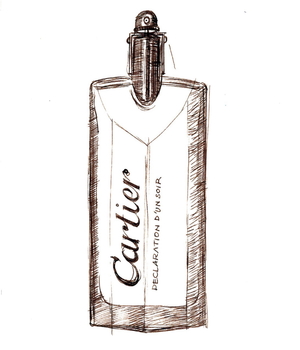 ‘This new masculine scent sensation is perfect for grand evenings – an impulsive perfume capable of sweeping away taboos, brazenly daring to say the unsayable and conjuring up moments of unforgettable bliss. Like a magic wand, it unleashes the emotions and feelings…’
‘This new masculine scent sensation is perfect for grand evenings – an impulsive perfume capable of sweeping away taboos, brazenly daring to say the unsayable and conjuring up moments of unforgettable bliss. Like a magic wand, it unleashes the emotions and feelings…’
Yes, it’s perfume bollocks time again, though at least this time at least it’s for rather a nice scent: Cartier’s Déclaration d’un Soir. Launched in 2012, it was created by their in-house perfumer, Mathilde Laurent, and like Cartier’s earlier (and now quietly discontinued) Must de Cartier Pour Homme, it has a surprising amount of rose in it for a men’s fragrance.
But don’t let that put you off: just as there’s no reason (in the right context) that a man can’t wear pink, so there’s no reason that the scent of rose, if it’s mixed with the right ingredients, has to smell floral and girly. That’s the brilliant trick of Serge Lutens’ Féminité du Bois, which – figuratively speaking – puts the smell of rose in a rather masculine cedar box.
Déclaration d’un Soir isn’t as striking as Feminité du Bois, but it’s got an appealingly plush feeling, with a slight (and not unpleasant) hint of damp soil. Déclaration d’un Soir does have a woody side to it, too, but in this case Mathilde Laurent has used sandalwood, which adds its own sweet spiciness to nutmeg, cumin and pepper.
(Incidentally, what is it about recent men’s perfumes and pepper? Virtually every ‘mainstream’ scent I’ve smelled in the last few years has reeks of the stuff, as if some secret society had ordained that all men’s perfumes had to include masses of pepper. I guess it’s just a fashion, but it makes most of them smell about as subtle and appealing as a pepper spray or a short-circuited computer. Luckily the pepper in Déclaration d’un Soir is pretty restrained.)
It’s a nice scent, as I say: warm, rich, long-lasting and – to my mind anyway – completely unisex. The only shame is that it comes in such a fussily designed bottle (the same as Cartier’s best-selling Déclaration), with its silly clip to stop you depressing the spray-top instead of a cap.
Far more of a shame, though, is the fact that Cartier have given up on Must de Cartier Pour Homme, which I liked even more and which came in that rarest thing: a really beautifully designed bottle. But that’s the perfume industry for you: a triumph of economics over aesthetics.
Frederic Malle
Cologne Bigarade
10 January, 2015
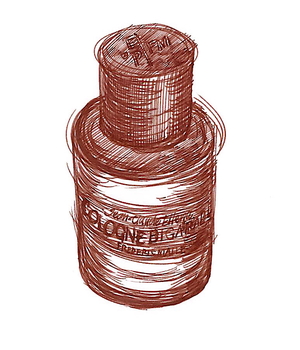 Every morning for my breakfast I have tea, toast and home-made marmalade. It’s one of my favourite things, and I love the bittersweet smell of Seville oranges, which only appear in the shops for a couple of weeks around this time of the year.
Every morning for my breakfast I have tea, toast and home-made marmalade. It’s one of my favourite things, and I love the bittersweet smell of Seville oranges, which only appear in the shops for a couple of weeks around this time of the year.
In fact as I sit here writing this post in January, Roy is busy cooking marmalade next door, and the powerful odour of bitter orange (known as bigarade in French) is suffusing the house from kitchen to attic.
So it could hardly be a better time to review Cologne Bigarade, created by the perfumer Jean-Claude Ellena for the French fragrance curator and marketeer, Frédéric Malle (nephew of the film director Louis Malle). Launched in 2001, it was one of the first of the Editions de Parfums Frédéric Malle, and to my mind it’s one of the most immediately appealing and easy to enjoy.
On first – I was going to say ‘glance’, but I suppose I should say ‘spritz’, it smells like a simple but high-quality natural scent, with the exact mix of sweet green freshness and slight bitterness that you get from orange peel and its bitter pith.
You could, I guess, just bottle Seville-orange extract and have done with it – and apparently Jean-Claude Ellena did commission a special new essence for this scent, obtained by molecular extraction. But like all good perfumes Bigarade Cologne is ultimately a clever recreation of what seems, on the surface, like a simple natural scent, using a careful balance of other ingredients to enhance and support the main ingredient.
In this case, Ellena has added a bit of hay and grass – or rather their synthesised essences – which makes the orange even fresher somehow, then subtly underpinned it with a little cedar-wood and rose, adding extra depth and staying-power. You could even say that these extra ingredients suggest the smell of the leaves and the twigs of orange trees, though perhaps that’s going too far.
(Actually, unless you concentrate very hard you can’t really smell them at all; but then we’re so suggestible when it comes to scents that once someone has told you that a particular ingredient is present, you’re more than likely to ‘smell’ it whether it’s actually there or not.)
To me Cologne Bigarade also has a very slight and not unpleasant sweatiness, which (from a short trip to the kitchen and back) is part of the authentic Seville orange smell. In perfume that faint sweatiness is often derived from cumin, and I wonder if there might be a touch of that classic curry spice here too.
Cologne Bigarade is not, perhaps, the most complex perfume on the market, but like most of Jean-Claude Ellena’s fragrances it’s rather more thoughtful and unusual than the general run. Given that he’s also the in-house perfumer for Hermès, it immediately made me think of Hermès’ classic Eau d’Orange Verte, which is also based on the scent of bitter oranges. Though that perfume was originally created by Françoise Caron in 1979, Ellena developed a new version in 2004 called Concentrée d’Orange Verte.
Eau d’Orange Verte is one of my all-time favourite fragrances, yet comparing them side by side, it smells sharper and fresher, but perhaps also slightly less interesting than Cologne Bigarade, which also seems to have much more staying power (a rare quality in a citrus-based cologne, though you can also find it in the fantastic sherbet-lemon Monsieur Balmain).
All the fragrances in the Editions de Parfums Frédéric Malle are expensive, and Cologne Bigarade is no exception, even if its packaging is extremely smart. The heavy, plain-glass bottle has a chunky black cap and comes in a slide-out, black foam-padded box, which in turn slides out (with some effort) of a scarlet card wrapper. If you have money to burn then there’s an even more expensive version called Bigarade Concentrée, which I’ve smelled as a sample and lasts even longer than Cologne Bigarade. The concentrated version also seems to have less of that faint sweatiness about it, which I suspect many people would prefer; I think I do too.
Either way, a fresh but unusual cologne is a wonderful thing to have, so full marks to Jean-Claude Ellena and Frédéric Malle for giving men something a bit different to wear. In a similar vein, though with a very different smell, is Malle’s Geranium Pour Monsieur, which I hope to be able to review before long; watch this space.
Chanel
Cuir de Russie
23 November, 2014
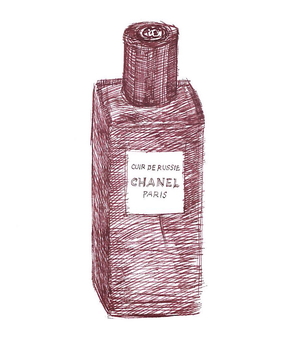 Would you smear yourself with diluted tar? That’s my first question. My second question: would you pay £150 or more to smear yourself with diluted tar? If your answer to either (or both) of these questions is ‘Not on your nelly’, then it’s possible that Cuir de Russie is not for you. If, on the other hand, you have an adventurous spirit and an interest in history, read on.
Would you smear yourself with diluted tar? That’s my first question. My second question: would you pay £150 or more to smear yourself with diluted tar? If your answer to either (or both) of these questions is ‘Not on your nelly’, then it’s possible that Cuir de Russie is not for you. If, on the other hand, you have an adventurous spirit and an interest in history, read on.
Chanel’s Cuir de Russie is widely regarded as one of the most luxurious perfumes you can buy, and there are good reasons for that. It’s one of the perfumes in Chanel’s Les Exclusifs range, all of which use the highest-quality raw materials. And it was concocted – at least in its original form – by Ernest Beaux, the perfumer whose name should really be on every bottle of Chanel No5, since it was Beaux, not Coco Chanel, who created it.
But back to tar. Tar comes in many forms, the best-known being bitumen or asphalt, the stuff that binds road surfaces together and sticks to your shoes in hot weather. You wouldn’t want to dab yourself with bitumen, not least because it smells revolting, but other kinds of tar are a different matter.
Burn wood in the absence of air and you get charcoal, but do the same to the papery sheets of bark that peel off silver birch trees, and out oozes a sticky black gloop with a rich smoky smell. This dense chemical mix of hydrocarbons and phenols is known as rectified birch tar, and it’s packed with delicious molecules such as guaiacol, cresole, catechol, pyrogallol and 5-methyl-pyrogallol dimethyl ether.
In Russia, which has no shortage of birch forests, birch tar became an important export product from the sixteenth century on. It had many uses, not least as an all-purpose glue, but the reason I’m writing about it now is because of the discovery that, if freshly tanned cowhide was impregnated with birch-tar oil, the resulting leather was not only waterproof and mould-resistant, but also developed an extremely pleasant smell.
Russian leather – or cuir de Russie, as it was known in France – gained an unrivalled reputation for quality, especially at the luxury end of the market. Ernest Beaux, who was born in Moscow and followed his brother into a job at the imperial perfumers, Rallet & Co, would have discovered the alluring smell of tar-impregnated leather early on, and it must have carried nostalgic memories for him when he left Russia for Paris in the wake of the Revolution.
The relentlessly social-climbing Gabrielle Chanel, for her part, had a Russian connection of her own: Grand Duke Dmitri Pavlovich, one of Rasputin’s assassins, with whom she had a short affair in 1920-21. It was through Pavlovich that Beaux first met Chanel, but which one of them came up with the idea of a perfume called Cuir de Russie isn’t clear. It was launched in 1924, three years after No.5, and was worn, from the first, by both women and men.
Though the use of rectified birch tar in perfumery is now restricted in the EU, and Cuir de Russie was ‘reorchestrated’ (for which read ‘reformulated’) by Chanel’s in-house perfumer Jacques Polge in 1983, it is still, it’s said, a fair approximation of Ernest Beaux’s original scent, though perhaps a little less rough-edged than the original.
Whatever the truth – and truth is a vanishingly rare commodity in the perfume industry – it’s still a wonderful smell, smoky and leathery and smooth, with no single ingredient taking centre stage. Beaux added aldehydes (the chemicals that give No.5 its glittery zing) but Cuir de Russie also includes jasmine, iris, sandalwood and rose, among other luxurious things, and it’s this balance of ‘masculine’ and ‘feminine’ scents that make it both immensely alluring and oddly difficult to place.
If ever a perfume was androgynous, then Cuir de Russie is it. Though I’m a great fan of ambiguity, and I certainly appreciate its sheer, unadulterated luxury, I have to admit that its mix of masculinity and femininity, powdery sweetness and smoky bitterness, does sometimes make it rather hard to wear. Still, it’s wonderfully long-lasting, without being overpowering, and for an expensive scent that’s surely a good thing (though as it comes in a stonking 200ml bottle, Cuir de Russie is actually better value than a lot of supposedly ‘cheaper’ perfumes). As for whether I’d wear diluted tar, I think the answer is yes.
Serge Lutens
Féminité du Bois
20 October, 2014
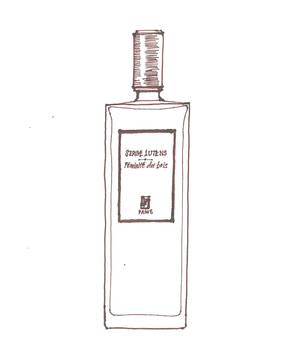 Féminité du Bois was launched in 1992 for Shiseido, the Japanese beauty company for which Serge Lutens created many striking ad campaigns, and which backed him in the launch, the same year, of his super-chic Salons du Palais Royal. It was in its original incarnation that I first encountered Féminité du Bois, and what first caught my eye was the design of the bottle – a lovely teardrop-shaped glass container, designed by Lutens himself.
Féminité du Bois was launched in 1992 for Shiseido, the Japanese beauty company for which Serge Lutens created many striking ad campaigns, and which backed him in the launch, the same year, of his super-chic Salons du Palais Royal. It was in its original incarnation that I first encountered Féminité du Bois, and what first caught my eye was the design of the bottle – a lovely teardrop-shaped glass container, designed by Lutens himself.
Sadly that style of bottle disappeared in 2009, when Lutens left Shiseido and set up in his own name; the perfume went with him, repackaged in his signature bottles – a tall, slim, rather flat rectangular design, stylish in its own right but not as poetic as Shiseido’s original.
Recommending a perfume called Féminité du Bois to men might sound like a rather capricious (not to say perverse) enterprise, but many great fragrances transcend the gender associations that their names, and their marketing, impose on them, and this is one of the most beautiful fragrances I know.
Floral scents may be thought of as quintessentially feminine, and it would take a very confident man to wear something that smelled predominantly, say, of jasmine or of rose. Yet some of the most popular men’s perfumes have flowers in them – violets in Grey Flannel, for example, or jasmine in Eau Sauvage.
Féminité du Bois is, if you like, a mirror image of these kinds of men’s fragrance: a nominally female fragrance made more, rather than less alluring by the addition of elements that are generally associated with the opposite sex. The master stroke, in this case, is the combination of sweet, rather girly smells – violets and plum (the fruit rather than the flower) – with the masculine, pencil-shaving smell of cedar wood.
It’s one of those combinations that works so well that you wonder why nobody had thought of it before, but I guess that’s the mark of genius – in this case the genius of British perfumer Christopher Sheldrake (who worked on many of the Serge Lutens fragrances before getting snapped up by Chanel) and the legendary Pierre Bourdon (Cool Water, Kouros and many others).
The first time I tried out Féminité du Bois my reaction was ‘This smells exactly like Bel Ami’. Which is to say, like pencil shavings, which is the main – and very appealing – impression you get from the classic Hermès scent. But moments later you realise that there’s more going on inside the woodiness, and the warmth and slight sweetness of plum, violets and spices blend with the cedar to make an effortlessly satisfying whole.
Luxury can mean different things to different people: for some, bling is the thing, but for others luxury means high quality and discretion – and that’s the kind of luxury Féminité du Bois suggests to me. It’s neither brash nor overpowering, which makes it eminently wearable, but nor is it faint or feeble. Try it for yourself and I hope you’ll see what I mean.
Cartier
Must de Cartier
14 October, 2013
I love this perfume, though Cartier have foolishly discontinued it – not only because it’s such an alluringly unusual smell for a man, but also because both perfume and bottle have the feel of solid quality about them, which is more than can be said for a lot of big-brand fragrances.
Must de Cartier pour homme was created by perfumer Nathalie Feisthauer from Symrise, the German-based fragrance multinational, and launched in 2000, but it’s remained relatively little known despite its quality.
To me it has a soft, almost floral smell without being particularly feminine – slightly rose-like, perhaps, but in the delicate a-rose-is-not-a-rose manner of old-fashioned tea roses derived from the wild Rosa odorata. It’s gentle, too, warm without being heavy; in fact the lightness of its warmth is its Achilles heel, as the one thing it really lacks is much staying-power.
The word that crops up most often in reviews is ‘refined’, and I’ll happily second that. Like Chanel’s Pour Monsieur it’s not a statement perfume; that is, it’s not something to spray on if you want other people to notice it, at least consciously. But you’ll still smell mighty fine, even if only someone very close to you is likely to pick up on it.
Maybe it’s just my lack of olfactory sophistication, but Must de Cartier is one of those odd perfumes that – to me at least – smells unlike any of its actual ingredients, which include sandalwood, bergamot, mandarin, anise and tonka bean. That may, of course, be a testament to the skill with which Nathalie Feisthauer blended them together, though when I asked a friend to sniff it they instantly said ‘liquorice’, which I guess must be the anise.
Still, that leaves the question of what Must de Cartier does actually smell like, and I’m still puzzling over that. It has a certain warmth and sweetness, which presumably derives from the sandalwood and tonka bean, but my rose associations may – oddly – be an olfactory red herring, suggested by the Cartier deep-rose red of the chunky bottle top.
It’s a rare fragrance that can be unusual without being weird, elegant without being boring, and distinctive without being overpowering: if only it was still on the shelves.
